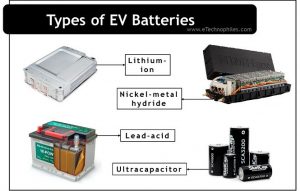Last updated on March 5th, 2023 at 12:30 pm
Electric vehicles use batteries to power the electric motor, which drives the vehicle. A manufacturer can either use a Lithium-ion battery, a Lead-acid battery, or an Ultracapacitor battery. It depends on the model type, cost, and specifications of the vehicle. This article discusses the different types of electric vehicle batteries used in an electric vehicle.
What does a battery in an electric vehicle do?
An electric car has an electric motor instead of an internal combustion engine. The motor rotates the tires, propelling the vehicle. The energy to power the electric motor is provided by the battery. When the battery level of the vehicle goes down, it can be charged by plugging into the grid. The vehicle can either be a battery-electric vehicle (BEV) or a plugin-hybrid electric vehicle (PHEV).
An important aspect of the battery-related metric is the vehicle’s range. It is the number of miles or kilometers you can drive before the battery runs out entirely. Any vehicle’s range depends on two factors:
- Battery capacity (measured in kWh)
- The optimization for efficiency (done by the car manufacturer).
How many batteries does an electric car have?
An electric car has two types of batteries, i.e., a Traction battery and an Auxiliary battery.
Traction Battery
It is the primary battery of an electric car. The purpose of this battery is to drive the electric traction motor. Whereas gas cars are powered through an internal combustion engine.
Auxiliary Battery
The purpose of this battery is to power the vehicle accessories, like headlights, indication lights, and more. A gas car also has this battery for the mentioned applications. Read more.
Related: 4 Helpful Tips for Electric Car Maintenance (with FAQs)
What are the different types of electric vehicle batteries?
The following four EV batteries are commonly used in battery-electric vehicles (BEV) and hybrids. Each one has its pros and cons.
- Lithium-ion batteries
- Nickel-Metal Hydride batteries
- Lead-Acid batteries
- Ultracapacitor batteries
Lithium-ion batteries
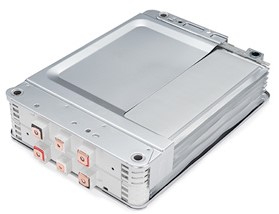
These are the most common type of EV batteries and are also found in consumer electronic items like smartphones, tablets, and laptops.
Lithium-ion batteries are preferred due to their high energy per unit mass compared to other batteries. They also have the advantages of a high power-to-weight ratio, energy efficiency, high-temperature performance, and low self-discharge.
Note: Tesla was the first EV maker to use lithium-ion batteries in the mass production of their original Roadster.
Types of Lithium-ion batteries
The exact chemical components of lithium-ion batteries vary based on several factors, including costs and expected performance. Common types include (based on their cathode or positive electrode chemical composition):
- Nickel-Manganese-Cobalt (NMC)
- Lithium Cobalt Oxide (LCO)
- Nickel-Cobalt-Aluminum (NCA)
- Lithium-Iron-Phosphate (LFP)
- Lithium-Manganese-Oxide (LMO)
- Lithium Titanate
NMC and NCA offer the most superior performance and are the costliest. Hence they are found in high-end or performance electric cars. LFP batteries are less expensive but not that efficient, although they are more stable. EV makers use them in affordable models.
Nickel-Metal Hydride batteries
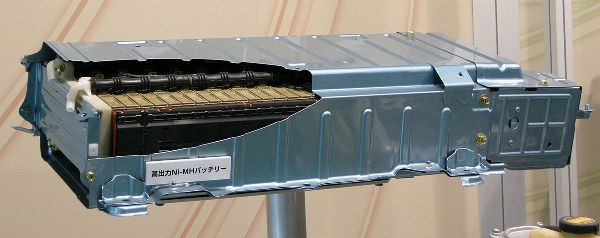
This type of EV battery offers reasonable specific energy and power performance. It is also used in computers and medical equipment. Compared to lead-acid, nickel-metal hydride batteries offer more life cycles. They are also safer under most operating conditions because they can tolerate more abuse.
Nickel-metal hydride batteries are more often used in hybrid cars, where they are usually charged from the internal combustion engine. However, their drawbacks include high costs, high self-discharge, high heat emission at high temperatures, and hydrogen loss.
Lead-Acid batteries
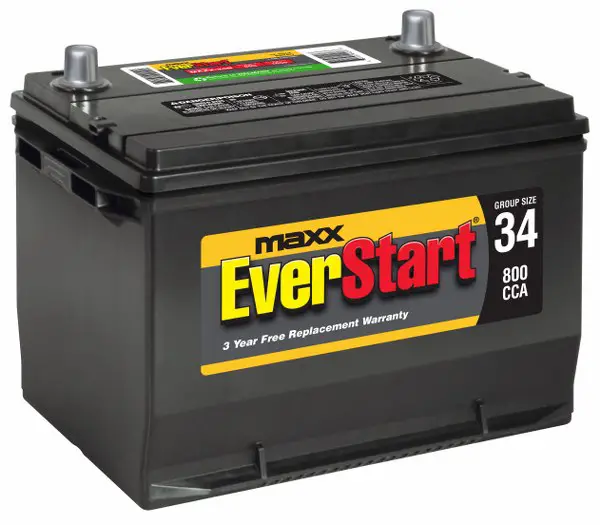
These are the oldest type of EV batteries. As a mature technology, lead acids are inexpensive, safe, and reliable. However, they suffer from high weight, low specific energy, sub-par performance during the cold, and shorter calendar and lifecycle.
Lead-acid batteries are often used in neighborhood electric vehicles (NEVs) where high performance is not needed. In some EVs, they are also used to power secondary electrical systems.
Ultracapacitor batteries
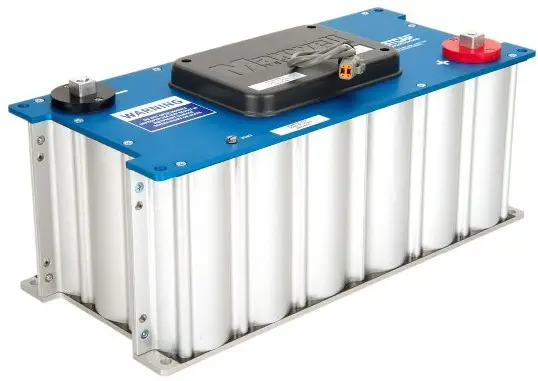
Ultracapacitors EV batteries use polarized liquids between electrodes and electrolytes to store energy. The more the surface area of the battery, the higher the energy stored in the capacitor.
However, ultracapacitors are usually used to increase the power when the car accelerates and climbs a hill. They also assist in regenerative braking. Ultracapacitors also help to balance load power as a secondary energy storage system.
Read also: Hydrogen vs Electric cars (5 Key Differences)
Conclusion
The most common EV battery types are lithium-ion, nickel-metal hydride, lead-acid, and ultracapacitor. Each battery type has some advantages and disadvantages. Like the lead-acid batteries are economical and reliable, but they have fewer life cycles than the Nickel-metal Hydride batteries. Lithium-ion batteries offer high energy per unit mass but are not efficient in the long run. However, battery makers continue to refine these energy storage components to improve performance and reduce cost.
